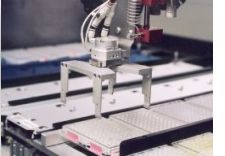
Unique Map Created of Human Protein Interactions
"We have laid the foundation for a comprehensive connection scheme of the human body. The map helps us understand the functions of proteins and the complex processes in our cells," explains Professor Erich Wanker, who directed the study.
 | |
|
With their new map, the MDC scientists hope to better understand the onset of diseases and to discover new molecular targets for therapy. They have identified new protein interactions that can modulate cellular signalling cascades important in the development of human cancers. and they found new interaction partners of the protein Emerin (EMD): a mutated form of this protein causes a rare form of muscle dystrophy, the so-called Emery-Dreifuss muscle dystrophy. "Our interaction map sheds new light on the function and dysfunction of many proteins", according to Professor Wanker.
The extensive studies on human protein-protein interactions were carried out with a special technology: the automated yeast two-hybrid system (Y2H). In this method, yeast cells are employed to identify the binding partners of proteins. "Interaction studies used to involve laborious manual procedures. Now, a robot system processes thousands of reactions as fast as lightning," Erich Wanker explains.
Wanker and his Co-worker Dr. Ulrich Stelzl established the robotics unit four years ago.
"We are proud to be the first lab to present a large scale human protein network to the community," says Wanker, after testing 25 million protein samples and creating a database that gives full access to the results to fellow scientists.
 Website of scientists involved in this NGFN project
Website of scientists involved in this NGFN project



